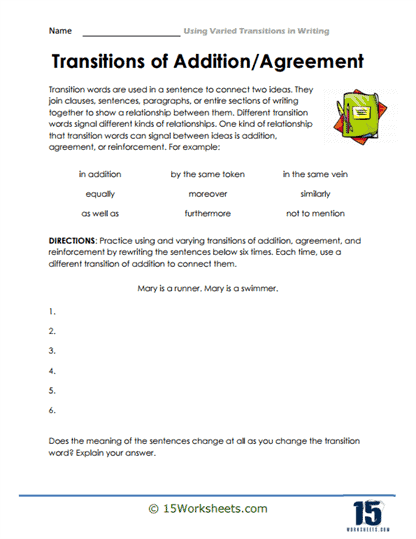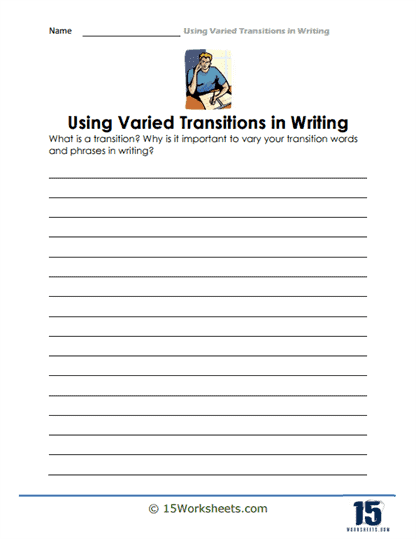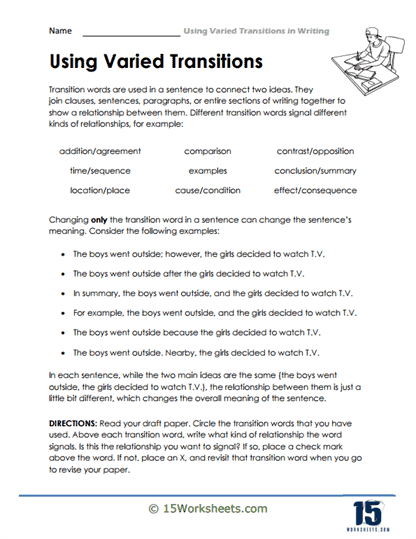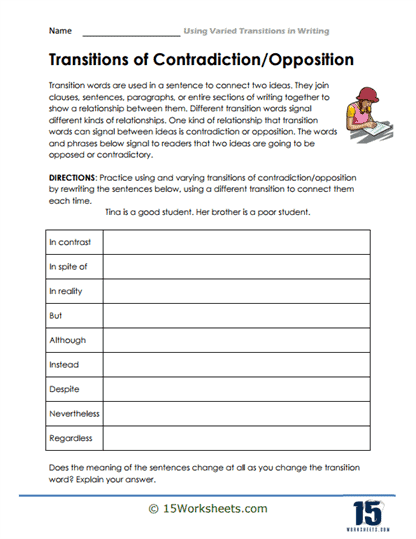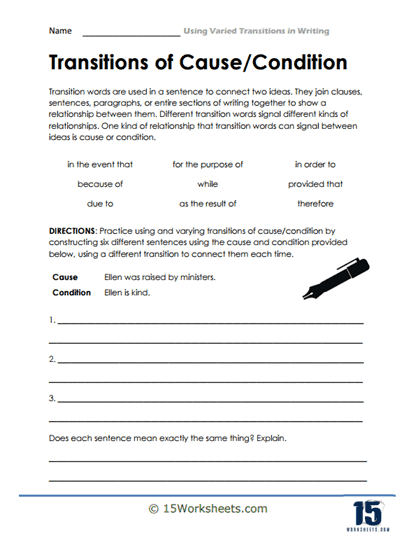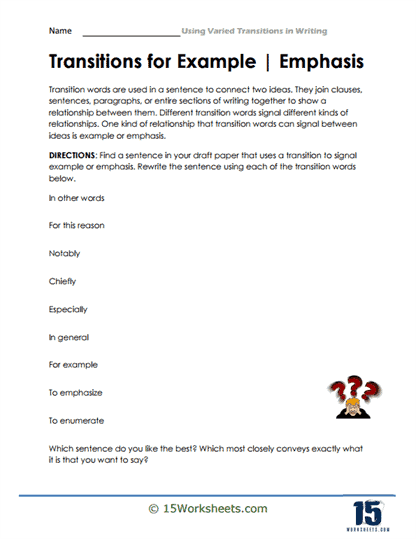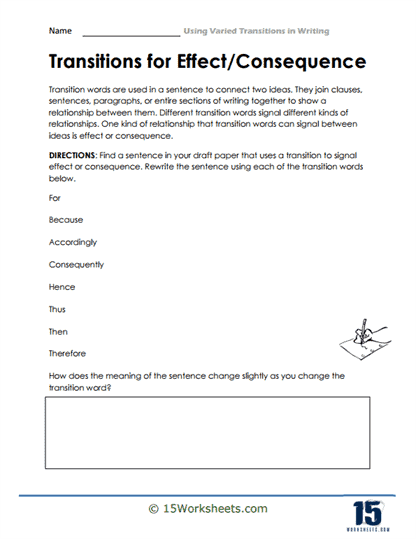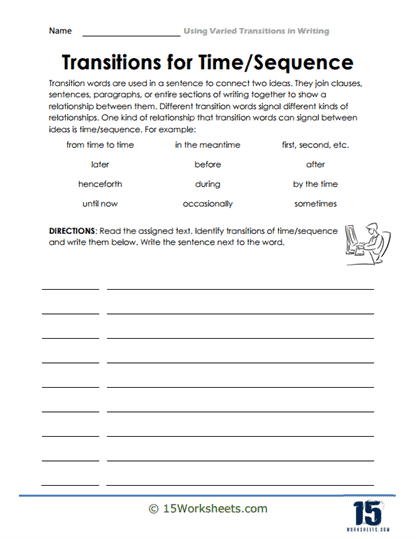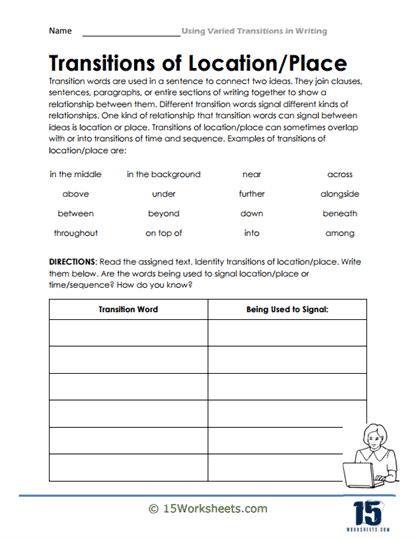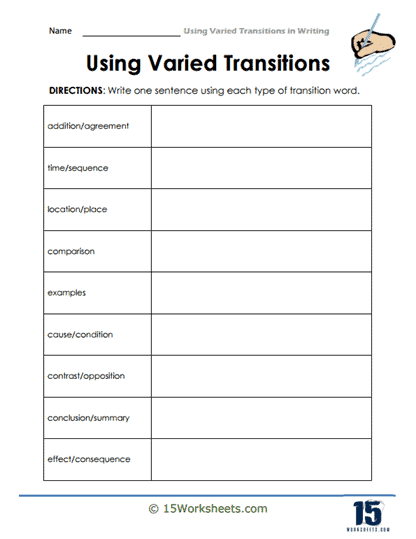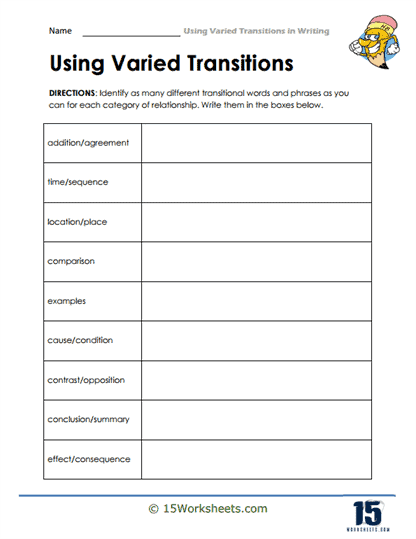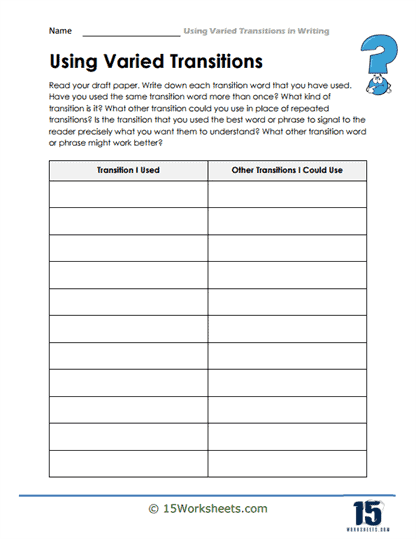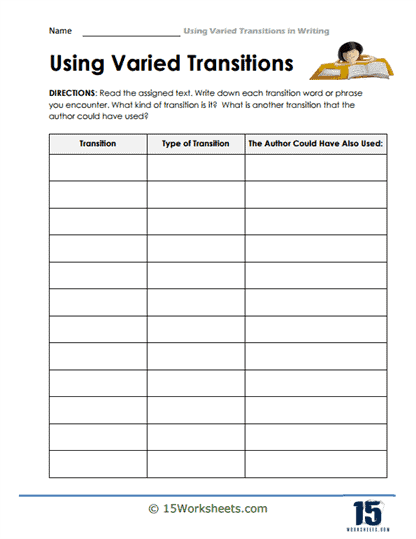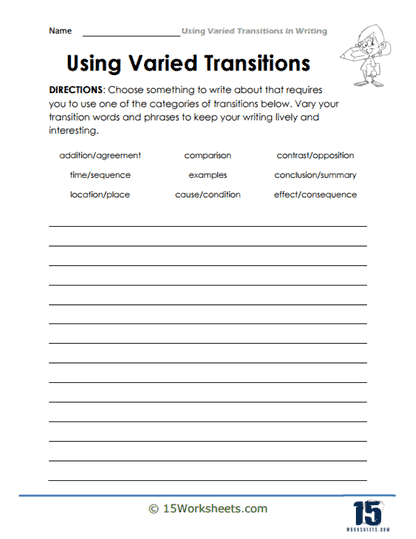Using Varied Transitions Worksheets
All About These 15 Worksheets
This series of 15 worksheets offers an invaluable resource for students to develop their writing skills by mastering the effective use of varied transitions. These meticulously crafted worksheets provide a comprehensive approach to help students enhance the coherence, flow, and overall readability of their writing through the skillful incorporation of transitional words and phrases.
The writing prompts empower students to understand the importance of transitions in creating smooth transitions between ideas, paragraphs, and sections within their writing. Through a series of engaging exercises, students will learn to use a wide range of transitional words and phrases, enriching their essays, narratives, and reports with clarity and coherence. By completing these worksheets, students will:
- Understand the purpose and importance of transitions in writing, exploring how these linguistic bridges contribute to clarity, coherence, and reader engagement;
- Explore the different types of transitions and practice identifying and using them appropriately in their writing;
- Learn how to select the most appropriate transition words and phrases for specific contexts, gaining the ability to convey relationships between ideas effectively;
- And refine their writing skills and develop a critical eye for identifying and rectifying issues related to transitions.
Overall, these Using Varied Transitions worksheets provide students with the tools and knowledge necessary to master the art of effective transition usage. They will also enhance their ability to create coherent, well-organized, and engaging written pieces. Whether it’s a short essay or a lengthy research paper, they will develop the skills to captivate readers and make their ideas flow seamlessly from one point to another.
How to Vary Your Transition Best in Writing
The transition in writing refers to how you move from one sentence or idea to the next. It’s important to vary your transitions if you want your writing to flow more naturally and be more engaging to your reader.
If you are having trouble coming up with transition words, it’s likely because you have too many of them. This can cause your writing to feel disjointed, as if it weren’t flowing as much as it should be to keep the reader interested and engaged in what you are trying to say. The key here is to vary the transitions and only use a few of the same transition types in close proximity to each other.
Here are five tips to help you do that when writing your next essay or creative piece.
1. Cut Out All Unnecessary Words
One way to vary your transition words and create better flow in your writing is to cut out all unnecessary words. This may seem counterintuitive, but by removing filler words and phrases, you can make your writing tighter and more concise.
In addition, by cutting out extra words, you can help prevent your reader from becoming bogged down in excessively long paragraphs.
2. Use a Thesaurus
This is a great way to find new and interesting words to use as transitions. Not only will it help you avoid repetition, but you may also discover new words that you can use in other areas of your writing.
Keep in mind that a thesaurus is a good place to find additional transition words, but adding too many transition words can disrupt the flow and make your writing seem disjointed. One or two per paragraphs should be enough.
3. Use Different Grammatical Forms
If you use different tenses, varieties of sentence structure, or change up your word choices-within reason-you’ll make your writing more interesting. Varying grammatical forms is another way to create flow and add life to your writing.
For example, if you keep using the word “however,” try using “nevertheless” or “on the other hand” instead.
4. Take a Short Break Between Each Paragraph
Any writer knows that the key to a good essay is a smooth transition between paragraphs. Unfortunately, it can be all too easy to get caught up in the flow of writing and forget to take a break. However, pausing for just a few seconds between each paragraph can make a big difference.
No matter how short or small your paragraphs are, they will seem more coherent if you take a short break between each one. This is easier to do when you write on a computer than with pen and paper because there’s always a blank space between paragraphs that makes it obvious where one ends, and another begins.
A small break can make all the difference in the quality of your work.
5. Use Sensory Details
When writing in transition, it can be helpful to use sensory details to help readers visualize what is happening. For example, if you are transitioning from one scene to another, you might describe the sound of the door closing behind the character or the feel of the doorknob in their hand.
By providing these kinds of details, you can give readers a more concrete sense of the character’s actions and surroundings. Additionally, sensory language can help create a more immersive reading experience. By engaging all five senses, you can help transport readers into the world you have created and make them feel as though they are truly experiencing it themselves.

